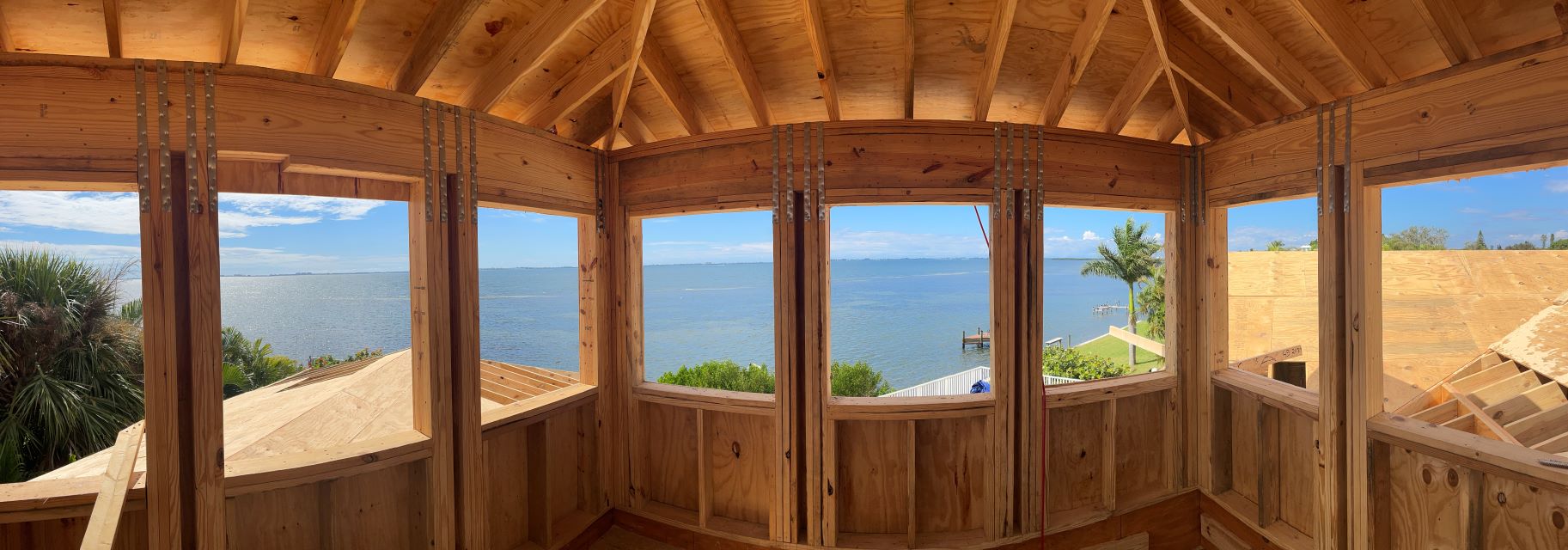
When planning custom homebuilding projects along the beautiful coastline of Manatee County, Florida, it’s crucial to understand the Coastal Construction Control Line (CCCL) regulations. The CCCL is a regulatory boundary established by the state of Florida to protect the fragile coastal ecosystem and minimize risks associated with coastal development. At Adkins Building & Construction, we specialize in navigating these complex regulations, ensuring that your coastal home meets all legal requirements while preserving the natural beauty of the shoreline.
What is the Coastal Construction Control Line?
The Coastal Construction Control Line serves as a safeguard for Florida’s coastal areas, particularly its dune systems and ecosystems, which act as natural barriers against erosion and storm surges. By regulating development along the coastline, the CCCL helps maintain the environmental integrity, aesthetic appeal, and resilience of Florida’s shorelines. These regulations are critical for sustainable coastal development and provide protection for both the environment and the structures built within this zone.
Key Regulations Governing the Coastal Construction Control Line
1. Setback Requirements
The CCCL mandates setback requirements that determine how far structures must be located from the mean high water line. These setbacks protect the natural dune system, reduce erosion risks, and shield properties from storm surges. Properly adhering to these requirements ensures both the safety of the home and the preservation of the surrounding environment.
2. Building Height Restrictions
To maintain the natural beauty of Florida’s coastlines, the CCCL imposes height restrictions on structures built within its boundaries. These restrictions prevent new constructions from obstructing ocean views and help preserve the visual harmony of the coastal landscape.
3. Dune Protection Guidelines
Dunes are an essential part of the coastal ecosystem, acting as natural defenses against storms and erosion. The CCCL strictly prohibits disturbing or altering dunes. Construction activities must follow specific guidelines to protect these ecological features and ensure their functionality as a barrier.
Compliance and Permitting Process for the Coastal Construction Control Line
Undertaking construction within the Coastal Construction Control Line requires obtaining permits from the Florida Department of Environmental Protection (FDEP). The comprehensive permitting process involves submitting detailed construction plans that comply with all CCCL regulations, including setback requirements, height restrictions, and dune protection guidelines. Failure to comply with these regulations can result in delays, fines, or even project denial.
To streamline the process, it’s essential to work with professionals who are experienced in CCCL compliance. Adkins Building & Construction specializes in guiding clients through these requirements, ensuring that your custom home adheres to all regulations while meeting your vision for a dream coastal property.
Consulting with Experts: The Key to Success
Given the complexity of Coastal Construction Control Line regulations, working with a knowledgeable team is vital for the success of your custom homebuilding project. At Adkins Building & Construction, we collaborate with architects, engineers, and environmental consultants to navigate the regulatory landscape seamlessly. Our experts provide guidance on everything from designing compliant structures to obtaining necessary permits, ensuring your project progresses smoothly and legally.
By partnering with experienced professionals, you can rest assured that your custom coastal home will be built to the highest standards, balancing environmental stewardship with innovative design and functionality.
Building Responsibly Within the Coastal Construction Control Line
Understanding and adhering to Coastal Construction Control Line regulations is essential for anyone planning to build a custom home along Florida’s coastline, particularly in areas like Manatee County. These regulations ensure that coastal development is sustainable, safe, and environmentally responsible. By complying with setback requirements, height restrictions, and dune protection guidelines, homeowners contribute to preserving Florida’s coastal ecosystem while enjoying the benefits of resilient and beautiful coastal living.
Compliance with CCCL regulations is not just a legal obligation—it’s a commitment to responsible coastal development and environmental stewardship. For personalized consultation and expert guidance, reach out to Adkins Building & Construction. Let us help you navigate CCCL regulations and bring your dream coastal home to life. Contact us today to get started on your custom home project in Florida’s breathtaking coastal regions.

